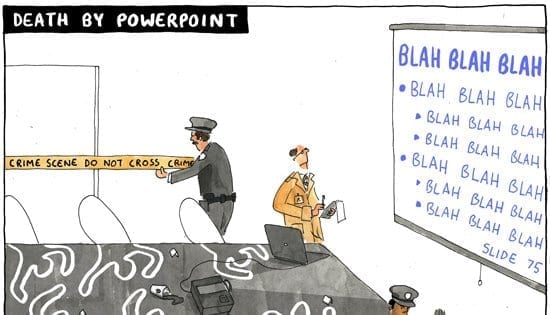Are you still guilty of “Death by Powerpoint?”
Seth Godin’s post on really bad PowerPoint 7 years ago is sadly, still as relevant today as it was then.
Organisations are often self deprecating about the internal “death by PowerPoint” that exists, but these are the same jokes that were being made ten and twenty years ago.
The individuals within our clients’ organisations, who are not happy with the status quo, but who are also determined to do something about it, are shaping Watch Me Think.
Given the amount of blood sweat and tears that goes into launching a new product, carrying out global segmentations, collecting shopper data to present to retailers or developing new packaging and promotions, it is logical, that as much effort would placed on informing and persuading the audience about the merits and reasoning of the paths you intend to take.
So given this logic, why is the default approach to trying to persuade, more often than not, reduced to; –
- Incredibly long Powerpoint presentations?
- Masses of bullet pointed data?
- Graphs, that lo and behold, point in the right direction?
- Tables?
- Not some stock photos, surely 🙂
You’re human. I’m human.
And I’m pretty sure at least most of your colleagues and customers are human – even though they do act strangely at times 🙂
This is why you need to connect emotionally with the people you are communicating with.
To not merely present, but persuade.
To change minds and agree with your conclusions.
How?
One proven technique that our clients have developed, is through the power of consumer-generated video, taken in situ, by real consumers.
By helping their audience see the World through their consumers and shoppers eyes, in a natural and authentic way, they create an emotional connection.
Not surprisingly, this proves to be far more engaging, inspiring and effective, than data rich power point slides alone.
The goal is not to make the presentation look prettier or to diminish the importance of robust data; it is to increase the likelihood that you achieve the desired change or outcome.


Comments
Comments are disabled for this post